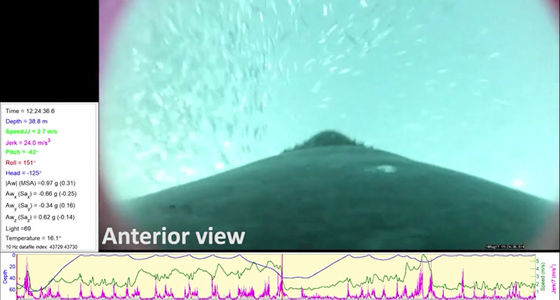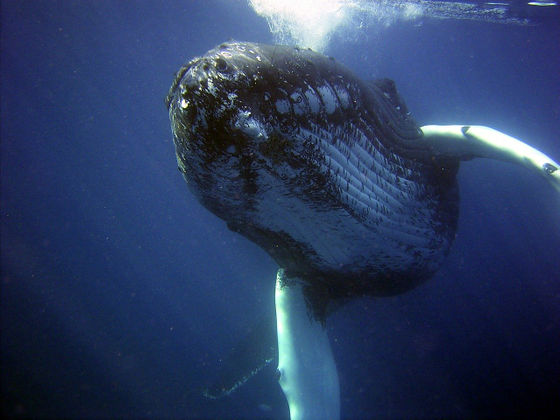It turns out that whales are preying on fish using stealth action and rush attack

by
Humpback whales prey on large amounts of fish every day, but humpback whales swim only fast enough for humans to jog, and far less than fast fish can escape. It turns out that such humpback whales are able to swallow a school of small fish with a clever predation technique that strikes the emptiness of the fish.
Predator-informed looming stimulus experiments reveal how large filter feeding whales capture highly maneuverable forage fish | PNAS
https://www.pnas.org/content/early/2019/12/17/1911099116
Study finds whales use stealth to feed on fish
https://phys.org/news/2019-12-whales-stealth-fish.html
A research group by Stanford University biologist David Cade et al. Has a camera on humpback whales living off Monterey Bay and off southern California to investigate why humpback whales that swim so fast can prey on quick small fish. And examined how humpback whales prey on food.

Using data such as the reaction speed of the small fish obtained from the survey and the number of small fish that escaped from the rush, we modeled how the small fish responded to the approach of the predator, and the humpback whale We simulated what was going on when predating on a PC. As a result, it was confirmed that the anchovy did not evade until the moment when the humpback whale opened. This means that when an anchovy notices the presence of a predator, it is just before entering the humpback whale's mouth.
In a further simulation, Kade and colleagues found that the anchovy uses the apparent magnification of the approaching object as a criterion when visually detecting the approach of a predator. 'We have been under threat from predators for at least 100 million years, and small fish have evolved to be able to quickly detect the approach of predators,' said Caid. It is now possible to respond to the approach of relatively small predators, but it is not able to respond to the predatory behavior of humpback whales that open up immediately before predation and seem to suddenly become huge '' .

by David Mark
Kade estimates that it was about 5 million years ago that humpback whales sneaked into the school of fish and opened their mouths before rushing to open their lungs. This means that humpback whales can now prey on 30-60% of the school of fish with a single rush foraging.
Past studies have shown that whales have grown rapidly since 4.5 million years ago, and may have something to do with having acquired rushing foraging.
Whales have grown very rapidly recently, and why? -GIGAZINE

They also found that hunting for humpback whales is a very efficient method of hunting. Rush foraging, which increases its speed after opening its mouth, requires a very large amount of energy because of the resistance of water. On the other hand, krill, one of the humpback whale feeds, is a small plankton that can be easily predated without rushing foraging. However, when Cade and his colleagues compared the energy consumed per predation to the energy gained from predation, it was seven times more energy efficient to eat small fish by rush-feeding than to feed on krill. It was.
Related Posts:






